Missed the Employee Engagement Summit? Here's some Highlights...
4 min read.Didn’t make it to this year’s Employee Engagement Summit? We did. And we would hate for you experience FOMO, so here’s a few of the edited highlights to give you a flavour of how companies are tackling the issue of engagement…
Now in its tenth year, the Employee Engagement Summit at London’s Brewery venue, gathers the great and the good from all corners of the recruitment market to hear keynote speakers, round table discussions and take part in some old school face to face networking. You can’t beat it.
This year’s keynote was by much-decorated former Manchester City midfielder and one of England’s European Championship-winning Lionessess, Jill Scott, who gave a motivational speech about leadership, team spirit, dedication to the cause and being very tall.
“It’s not the splash you remember, it’s definitely the dive,” she told those assembled. And perhaps most pertinently for the general theme - “Always check in on your teammates”.
Virgin’s family way
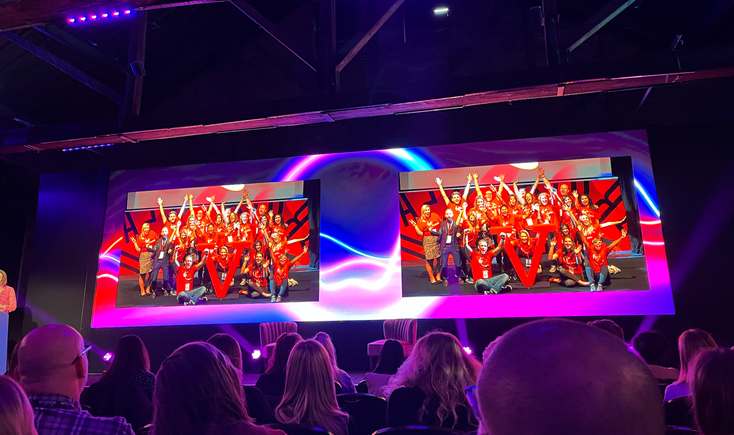
The event offers an extensive programme of quick-fire seminars from leading HR and recruitment practitioners alongside an expo element that includes just under 40 solutions providers offering everything from neuroscience-based platforms to employee reward schemes.
Nikki Humphrey, Chief People Officer at Virgin, was one of the first on stage and explained the Group’s high profile approach to diversity, outlining a number of its recent initiatives. She said: “One of our traits is about being human… being human creates a really strong sense of inclusion. Celebrating and understanding everyone for who they are and what they stand for is really critical to success and creating stronger sense of inclusion.”
“Our employee engagement results really reflect high scores and inclusion, and also the ability for team members to really feel they can bring their whole selves to work. And this also had a positive impact on improving mental wellbeing as well. Since that new policy was introduced, Virgin Atlantic has also had a 100% increase in job applications. So, it really does impact a whole ecosystem.”
Most people will have seen one of the most high-profile examples of Employer Branding in its extensive ‘I am what I am’ campaign for Virgin Atlantic, celebrating its LGBTQ+ staff, but Humphrey also highlighted its internal Dyslexic Thinking campaign celebrating those employees (including the boss with the beard) that have dyslexia but offer traits such as creativity, problem solving and communications skills.
“Digital is key to enable us to really be connected,” she added. “And to enable us to go and collaborate across the many countries that we span and the many businesses we have - up to 50 Virgin businesses - and also as an individual. We have recently launched our Virgin Family platform. It's an online home for our 50,000 people to connect, to collaborate, and to chat with one another.
“We celebrate successes, we understand more about each other's Virgin Businesses. We share stories that bring to life our values and our traits, because they just support what we do. And we even share photos of our pets, and our Wiggle Room is one of our most popular pages, which is fun to visit. And we also offer exclusive experiences and deals for employees that only Virgin can offer.”
Specs appeal
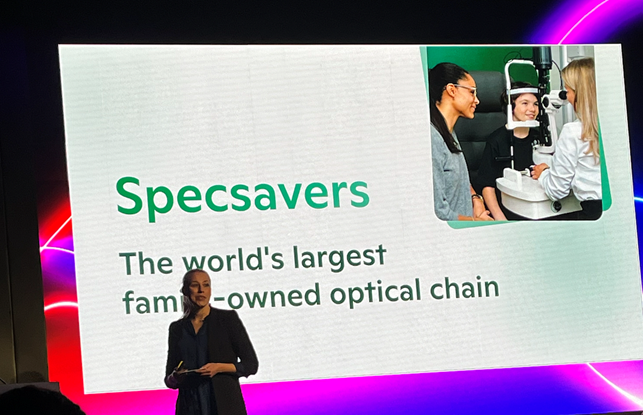
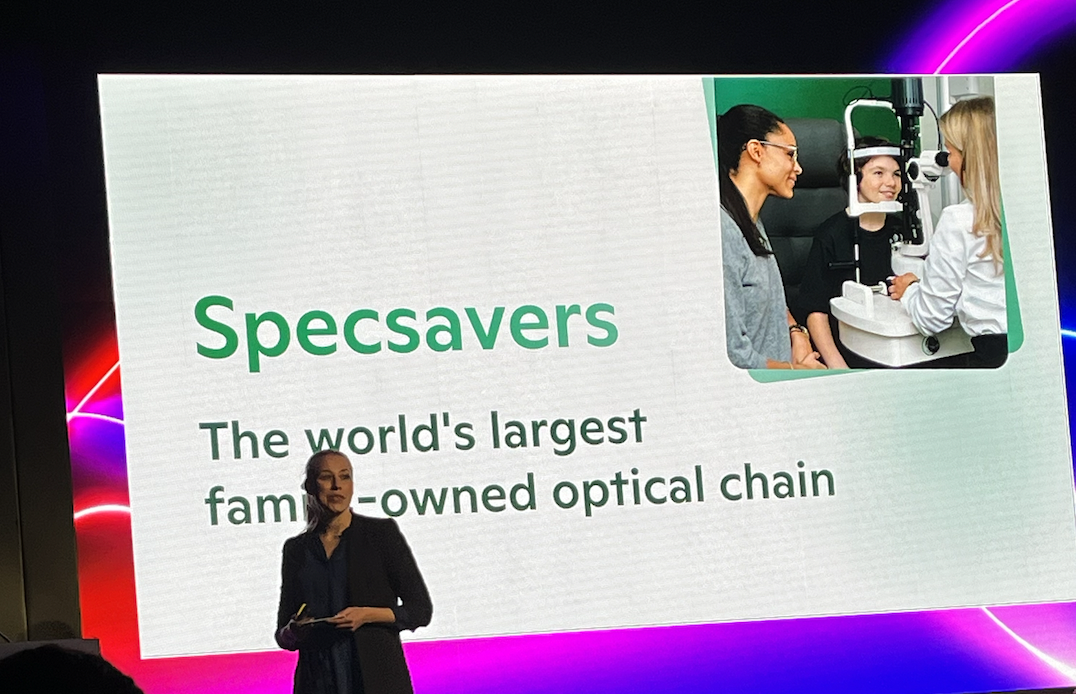
Specsavers’ Tiina Masar Bindner took us through the firm’s GreenPoint online engagement and training platform for staff and offered five tips for improving levels of employee participation.
“The first one, put employees at the heart of your decision making. What's easiest for you, or for your IT team isn't necessarily best for your employees. Number two - give your employees a voice. If you can get two-way communication and dialogue to work, that can be really, really powerful when it comes to engagement and culture.
“Number three - keep it simple, both from a process perspective, but also from the digital employee experience perspective. Number four - prioritise user adoption. This is something that we would have wanted to do more of if we had a bit more time and resource. When you launch new things to your employees, make sure that you offer communication and training around how to use new features, and focus on leaders and line managers as they are a really key enabler.
"And number five, when it comes to the selection of the supplier, focus on the product and the budget but also focus on the ways of working and the culture of the supplier because this will also help you go a long way and create an even better product.”
Empathy Island
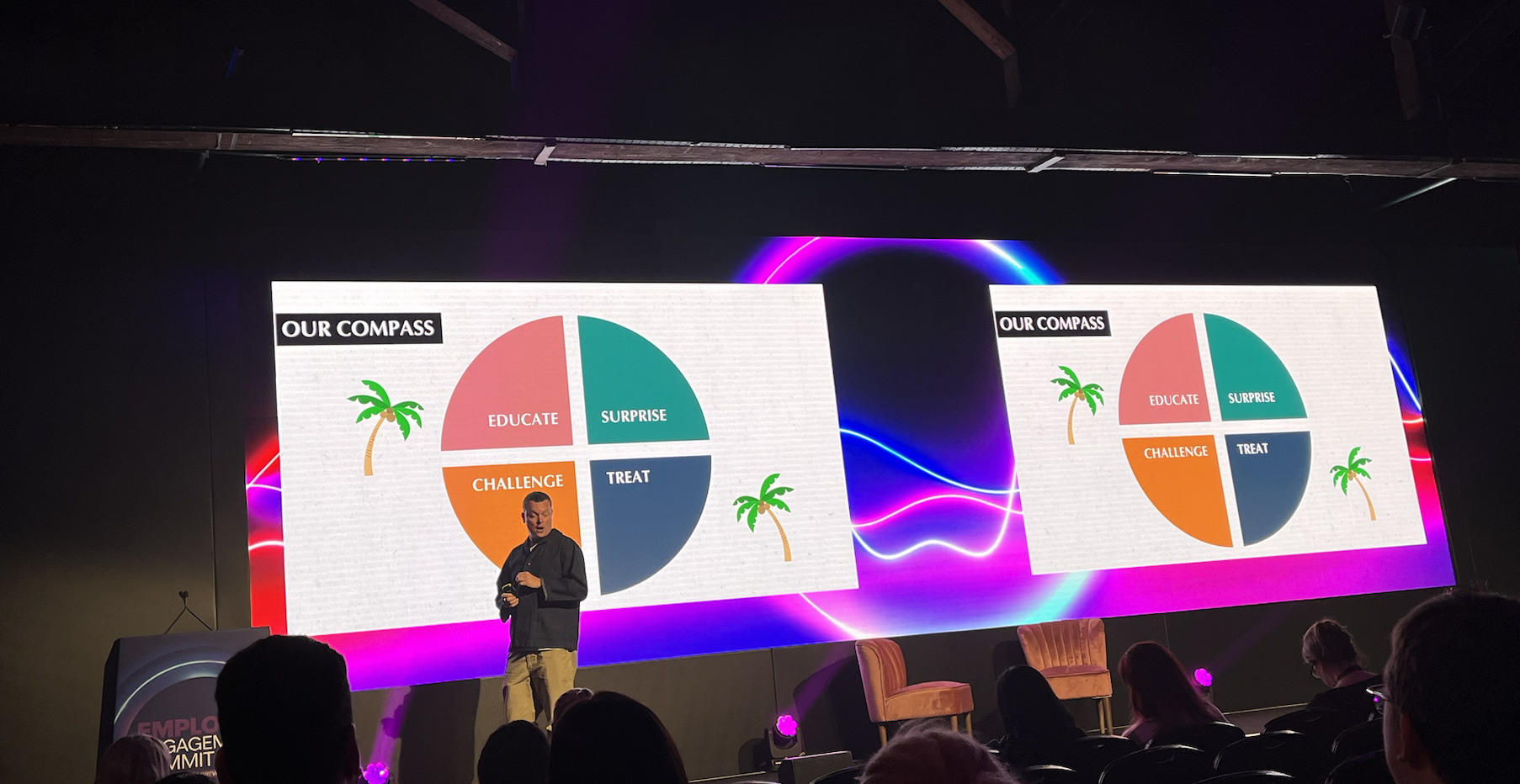
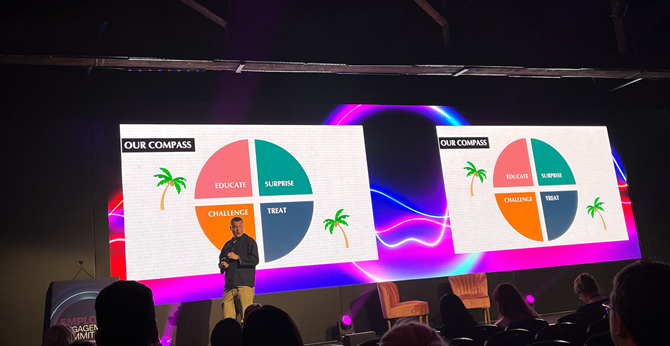
Over at River Island, the high street clothes brand really thought about what its Islanders (yep, that’s what they call them) actually need at Christmas during an energy and cost of living crisis.
Glenn Grayson, people engagement lead at River Island, explained its approach: “We really wanted to think of a way that we could involve and include everyone across The Island. So, we recently launched our company values, and one of them is Every Islander Counts. Everyone across the island is equal, we share that same experience. Now as a business, we have around 7,000 people and the majority work in our stores in a frontline role. But we also have a head office function, we have remote workers and we also have hybrid workers too.
“We wanted to think of ways that we could engage all those people in our Christmas activity. And one of the things that we educated Islanders on was mental health. As well as being a really important topic, there was a lot of work that we did around, it's okay for Christmas not to be perfect, it's okay for the holidays to have a bump in them. And we used our mental health allies to create lots of content for us, that we shared on our internal comms engagement platform.
“The cost-of-living crisis is something we heard very, very often over the Christmas period, so we reframed what prizes and giveaways look like over Christmas. A Yankee Candle is great, but you can't pay your gas bill with a Yankee candle. So, what we did was we reevaluated what prizes we gave away, and we gave away prizes really useful to people during this tough financial time. That's when we hosted our digital supermarket sweep competition, where winners every day for a week have their groceries paid for by the company.”
What is workplace culture?
Employee reward specialist Perkbox, held a round table discussion headed up by Chief People Officer, Mona Akiki, and unearthed some interesting descriptions of what culture is, gaining a mix of responses.
“I think it's quite to do with an unwritten code of how to behave, how to feel, even sometimes how to dress. Yeah, it's just there. You have to kind of try and work it out sometimes.”
“I think for us, it's what is acceptable and what isn't acceptable within that group context.”
“It's all about our internal beliefs about creating this perfect mission statement, creating these values, this purpose, but really, it's all about the intrinsic, both extrinsic factors in order to get people to be part of that company culture.”
When asked to describe their own company culture, some people struggled to pin it down.
“We could put all the values on a sign on top of Ben Nevis and say, ‘this is our organization's culture’. But actually, unless we behave in a way that complements those values, then it means nothing. So, culture is set very much by people.”
“It depends who you ask. What's most important to them?”
Of course it does. That’s why you need to dig deep to find the truth of your organisation at all levels in the discovery phase of building an Employer Brand.
“I think our culture is about driving curiosity, challenging of one another, in a productive way, working together towards one common goal and seeing the inputs of the people, not just within your own team, but others and really working cross functionally as much as possible.”
How to move to a four-day week
Many companies are having discussions around flexible working arrangements right now and Anne-Marie Lister, Chief People Officer at Atom Bank outlined the challenges and outcomes of moving to a four-day week.
Reputational risk, risk to customer satisfaction, financial regulations and compliance were all potential obstacles to implementation as well as sensitivities around individual situations and workloads.
“If it really looked like at any point there was going to be any kind of customer detriment, we wouldn't do this. And we had to have that upfront conversation with our people to say, we want to do this, we want to do it together, but there are non-negotiables because we are a business at the end of the day.
“And I think that openness and transparency is really important. We're a fully regulated bank so, if there was any detriments or issues with regulation or compliance, we wouldn't be able to proceed. And conversely, if it starts to have a detrimental impact on our people, and we've actually got it completely wrong, then again it would be something that we'd say, this isn't for us, we'll need to think of something else and go back to the drawing board”.
In actuality, after consulting management and staff, drawing up an implementation plan and mitigating those risks, the move has produced some encouraging results.
“We've had some really good success,” she explained. “Applications increased by 500% the week after, but sustained to the level of around about 30-35%. In terms of direct applications, our attrition dropped by 10%. Our engagement increased by 10%. Our engagement scores 85% so, it's pretty high anywhere. And our sickness levels dropped. It’s textbook.”
There was a lot more. Plenty of data that exists elsewhere but also enough insight from individuals and organisations to make it worth a day out of the office. Especially if your office is at home.
